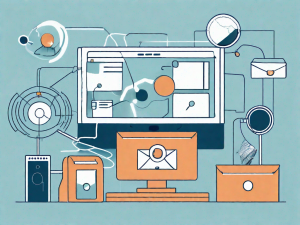Successful customer experience strategies can help a company stand out against the competition. Let’s face it, your business does have competition. So, let stellar customer service push you to the head of the pack.
Consumer experience trends evolve with consumers’ wants and needs.
“Customer service will largely be shaped by how technology and the human element co-exist to deliver the best solutions to consumers in the most effective manner,” says Hara Faron, an international customer service professional.
A successful CX strategy goes hand in hand with meeting current customer expectations. Effective customer experience strategies accommodate customers’ ever-changing wants and needs.
1. Make It Personal
Connecting with the customer is everything. Customers have to feel valued, understood, and connected with a company. With an ocean of options, a customer will select the one that feels good. After all, customers make decisions emotionally and then justify them logically.
And so, emotional connection is one of the most important customer experience strategies. Personalizing all customer interactions serves as a great connection tool. It ensures a positive customer experience and, therefore, satisfaction. Using customer insights to get to know your customers on a deeper level helps create a customer-centric culture. That, in turn, facilitates brand loyalty, encourages repeat customers, and increases customer lifetime value.
In this video, the Temkin group visually demonstrates the importance of personalization of customer experience.
Here are some ways that can help personalize the customer experience. Check out the “related read” for more details on each tactic.
- Listen and understand customers with eyes, ears, and feelings.
- Treat feedback like it’s gold
- Make products fit the customers’ needs
- Surprise customers with gifts and incentives
- Pay attention to presentation and packaging
- Keep customers up to date on order statuses
Related read: The Power of Extreme Personalization of CX
2. Train Employees in Customer Empathy.
Personalization creates an emotional connection with customers. Empathy deepens it further.
“We are not thinking machines that feel, we are feeling machines that think.” (Daniel Kahneman, Nobel Prize winner 2002, Thinking, Fast and Slow)
Your customers might not remember exactly what you said. They will definitely remember how you made them feel. Empathy is essential in a successful customer experience.
Empathy doesn’t necessarily have to do with problems. Though when a customer has a complaint, empathy is essential. Empathy simply means understanding how the other person feels, good or bad. Putting yourself into customers’ shoes is a fundamental way to boost your customer focus.
Have you ever felt excited about something only to realize no one else around you is? That can be a bit discouraging. But if someone is sharing your excitement, you feel even better.
So if a customer feels frustrated with a service – show empathy. If a customer feels excited about a product or service – again, show empathy. Empathise with customer’s emotions.
Related read: 30 Empathy Statements that Make Customer Service Shine
Researcher and sociologist Brene Brown explains empathy with the phrase “Empathy – feeling with people.”
When your staff members make customers feel truly heard, customer satisfaction rises.
3. Give Employees Excellent Product Knowledge.
When everyone in your company can act as support, customers can get their questions answered promptly.
Imagine this situation. You go to get a coffee and ask a barista about the difference between a latte and a cappuccino. The employee just shrugs his shoulders and can’t give you an answer. How would that make you feel? Would you even consider buying either beverage? Now, what if not only the barista told you the difference? (Latte has more milk and less foam, by the way.) But also gave you some information on where the coffee shop gets its coffee beans, how it makes its espresso, and what time the next live music performance at the shop starts. You’d remember that interaction. That’s excellent customer service.
You may not own a coffee shop. And perhaps you don’t need to go to the extent of giving out too much information without a prompt. But your customer service team needs to have great knowledge of the product. Give your team members resources to educate themselves on all the details. That way if and when questions arise they will be ready. Saving your customers a call to the help desk goes a long way toward making them happy.
Providing knowledge also improves employee experience for those in customer-facing roles. Equipped with the right tools and information, team members become better prepared for customer inquiries. That preparedness improves employee engagement. Knowledge is power. And the more power customer-facing employees have the better the team’s performance turns out to be.
4. Implement Helpful Tools As Customer Experience Strategies.
One of the most important aspects of a great experience is the ease of service at customer touchpoints. Take a look at successful customer experience examples. The runs a consistent theme. Doing business with these exemplary brands is convenient and easy for customers.
One way to ease customer experience is to incorporate helpful tools and infrastructures. Consider implementing effective digital and AI-powered tools. and facilitating software engagement. For example, live chat and support ticket software help assist customer troubleshooting. Streamlined self-help options like a knowledge base on your website and call-back systems can eliminate lengthy hold times. Customers perceive looking up a tracking number or reading FAQs as less effort than calling a customer care center. Offering these options increases satisfaction.
If lacking resources, consider outsourcing customer service operations. Most of the time that’s a much cheaper alternative than running an in-house call center.
Mobile Customer Experience Strategies
One important aspect of customer experience today is mobile customer service. Customers who are dissatisfied with mobile support will be dissatisfied with the overall customer experience.
Optimizing customer mobile experience to fit specific audiences’ needs is key. Do your customers text more or use web-based services? Factors such as age and other demographics influence their preferences. Use their feedback and common statistics that show trends to determine what works best for your customers. If your customers do prefer mobile connections SMS-powered live agent connections and chatbots can speed up communications. And, therefore, keep customers happy.
AI Tools Help Employees and Customers
As artificial intelligence continues to develop, its implementation in business operations has to become an important factor in the CX game plan. If used correctly, AI can serve as a brand differentiator. It can help create personal connections with customers, obtain valuable information, and deliver actionable insights to customer service teams. Of course, companies must keep human instincts in all AI-tech development and use and follow established guiding principles in AI implementations.
The latest technologies in the AI market can help launch new campaigns, improve service offerings, and provide self-service options for customers. Feedback collection, timely responses to repeated and common questions, and concerted analytical efforts can lead to positive interactions between a brand and its customers.
5. Resolve Customer Issues at Their First Point of Contact.
Research shows that having to repeat a problem to a chain of customer service representatives is frustrating to customers. Customers do not want to repeat themselves. Improve first contact resolution by ensuring that the person who initially handles the call takes full responsibility for it until the customer’s concern is resolved.
Offering live chat support on your website allows for more collaboration behind the scenes.
Experienced agents can effectively mentor new hires by “whispering” answers to them as they chat with customers. Other effective tools can help with customer communications as well as agent training.
When it comes to customer service agent interactions, ensure that the agents review all available history the customer had with the company. This includes past calls, chats, and issues that came up. Knowing everything about your customers aids personalization, one of the important customer experience strategies we discussed above.
Related post: 7 tips for boosting your call center’s FCR (First Contact Resolution) rate
6. Deliver on your promises.
Trust and authenticity never go out of style. Companies of any size can learn some lessons from mom-and-pop small businesses. Especially when it comes to caring deeply about customers and delivering on promises.
Every package that arrives on time or product that works as intended reinforces your customers’ trust in you.
Customers don’t want you to promise them the moon. At each customer’s touchpoint, they want you to deliver what you promised on time and with a smile.
7. Listen to Customer Feedback
Here are some statistics (from CustomerThink):
- Average feedback frequency ranges between 2-10% among customers.
- Feedback collected at or close to the point of service delivery is 40% more accurate than feedback that is collected just a mere 24 hours later.
- Gathering feedback in real-time at the right point of the customer journey can raise the response rates by 20%.
Collecting customer feedback is important to brands for three reasons:
- It provides essential information about the company’s standing with its audience. This answers the question: Are we meeting customers’ needs?
- Feedback gives companies invaluable opportunities to see ways to improve and grow the business. The question here is: How can we improve our products and services for our customers?
- Does my voice matter? Yes, it does! Customers feel heard and respected because their opinions matter. They feel belonging.
Consider exploring untapped and direct customer experience intelligence. There are various ways to collect and analyze feedback. Customer experience metrics, online reviews, and customer satisfaction surveys. Anything that connects a business to its customers in a stream of communication is valuable. The more shared understanding of what is important to the customers teams have, the better.
Monitoring KPIs such as customer effort score, customer satisfaction score, insights on customer retention and customer churn all help create personalized experiences. Examine customer personas and customer profiles. Engaging in social listening and social media conversations through various social media channels. Understand customer’s views of existing products. When a company learns from customer queries and understands its potential buyers and their purchase decisions, it gains a competitive advantage that leads to business success
Better products and services, understanding of the audience’s needs, and better connections with customers. These positive consequences of listening to customers’ feedback help businesses grow, while continuously improving customer experience.
8. Help Customer Achieve Their Goals.
“Most retailers don’t have to be that inventive. They just have to know their customers and then give them what they want, not what they want them to have. Companies with solid approaches to marketing help us realize our ideal selves, the people we wish we were. Help people get closer to their ideal selves and their ideal lives.” Dr. Linda Henman of Henman Performance Group.
How can a customer support agent use the self-actualization principle to everyday interactions with customers? By asking questions like, “What are my customers’ goals?” “What does our ideal customer want and expect of us?” “What is our unique contribution?” and “Who would miss us if we went away?” Understand your customer’s journey.
Self-actualization makes customers feel good by bringing them closer to their goals. Respect is another value that is a keystone to customer experience strategies.
“Respect should be the cornerstone of customer service. It should be the one concept that is emphasized throughout corporate ranks from C-level management all the way down to frontline employees. In fact, frontline employees who are treated with respect by their companies are far more likely to treat their customers with respect as well.” (Dr. Guy Winch, Psychology Today)
Respect, both internal and external, is always one of the top customer experience strategies. Customers and employees want to feel respected. Respect time, dignity, and intelligence. Then watch that respect reciprocate. Employees will create better customer relationships. Customers will respect the business back with their loyalty. Experiences will reach higher levels all around.
9. Implement Omnichannel Communications
Omnichannel customer experience is a key concept in customer engagement. It’s important to provide a variety of communication channels. They maintain a consistent and effortless experience from one channel to another. In other words, no matter what channel a customer uses to communicate, all channels work as one consistent stream of communication.
We can all understand the customer’s frustration. We all had the experience of bad customer service communications. Among many pet peeves bad service brings are instances when we have explained our problem over and over again to different agents. Yet, when a service representative knows everything about us, things feel different. Like a local shop vendor who knows one of her regulars, when a company knows its customers’ communication history, service blooms.
CX Strategies for Business Success
In today’s fast-paced world humans and technology co-exist, creating a flavorful environment for everchanging customer expectations. Customer satisfaction depends heavily on the quality of customer experience.
To rise above the competition and stand out in the sea of companies that offer similar products and services, connecting with consumers through superior customer experience is the key. Providing a seamless experience, using the right technology, and effectively addressing customer pain points, serve as the main components in CX. Paying close attention to customer experience strategies can lead to a significant increase in revenues and the number of brand advocates.
Which strategies work best for your business when it comes to customer experience?




